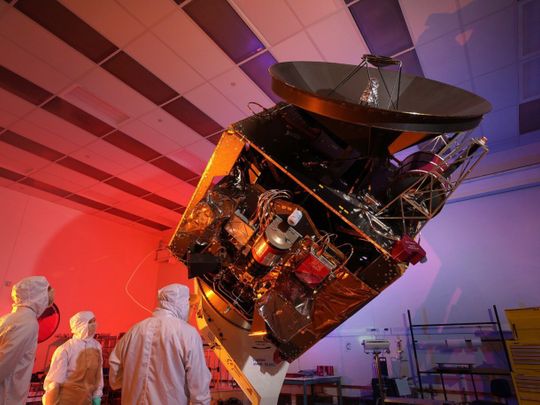
Dubai: With one day left to go for the UAE’s launch of its Hope Probe to Mars, social media users shared their pride and joy as the country is set to make history.
The launch of the Hope Probe on July 15 at 00:51:27am (UAE time) from Japan’s Tanegashima Space Centre (TNSC) marks the Arab world's first mission to Mars, and the start of a new chapter – one that embraces the new era of science and technology.
UPDATE: Due to bad weather, the launch was postponed to July 17, Friday, at 12.43 am.
Accompanied with the hashtags #HopeProbe, #HopeMarsMission and #FirstArabicCountdown, social media users urged fellow tweeps to be part of this defining moment in history, which will also serve as an inspiration to other countries.
During his drive into Abu Dhabi, Abdullah Al Balushi shared a video of the smart gate’s message to motorists, which displayed the Hope Probe’s logo. “This morning starts with pride,” he said, as he proudly inserted a couple of UAE flags with his tweet.
The Hope Probe - Al Amal in Arabic - is expected to reach Mars's orbit by February 2021, marking the 50th anniversary of the unification of the United Arab Emirates. It will then take 687 days to explore the planet.
The mission will be to study the dynamics of the Martian atmosphere and help answer key questions such as why Mars loss its hydrogen and oxygen gases into space.
Hope Probe will study the weather system of Mars, monitoring for the first-time weather changes throughout the day, across the planet and during all seasons. It will observe weather phenomena such as dust storms, as well as changes in temperature and atmosphere that will reveal the causes of Martian surface corrosion.
It will also monitor the distribution of hydrogen and oxygen in the upper portions of Mars’ atmosphere (exosphere) and study the link between weather changes in the lower atmosphere with loss of hydrogen and oxygen in upper atmosphere. This process may have been responsible for Mars’ transition – over billions of years – from a thick atmosphere capable of sustaining liquid water on the surface to present cold, thin, and arid atmosphere.
Residents can join in on the action by doing the countdown in Arabic, which will be the first time in history for any space mission to do so.








